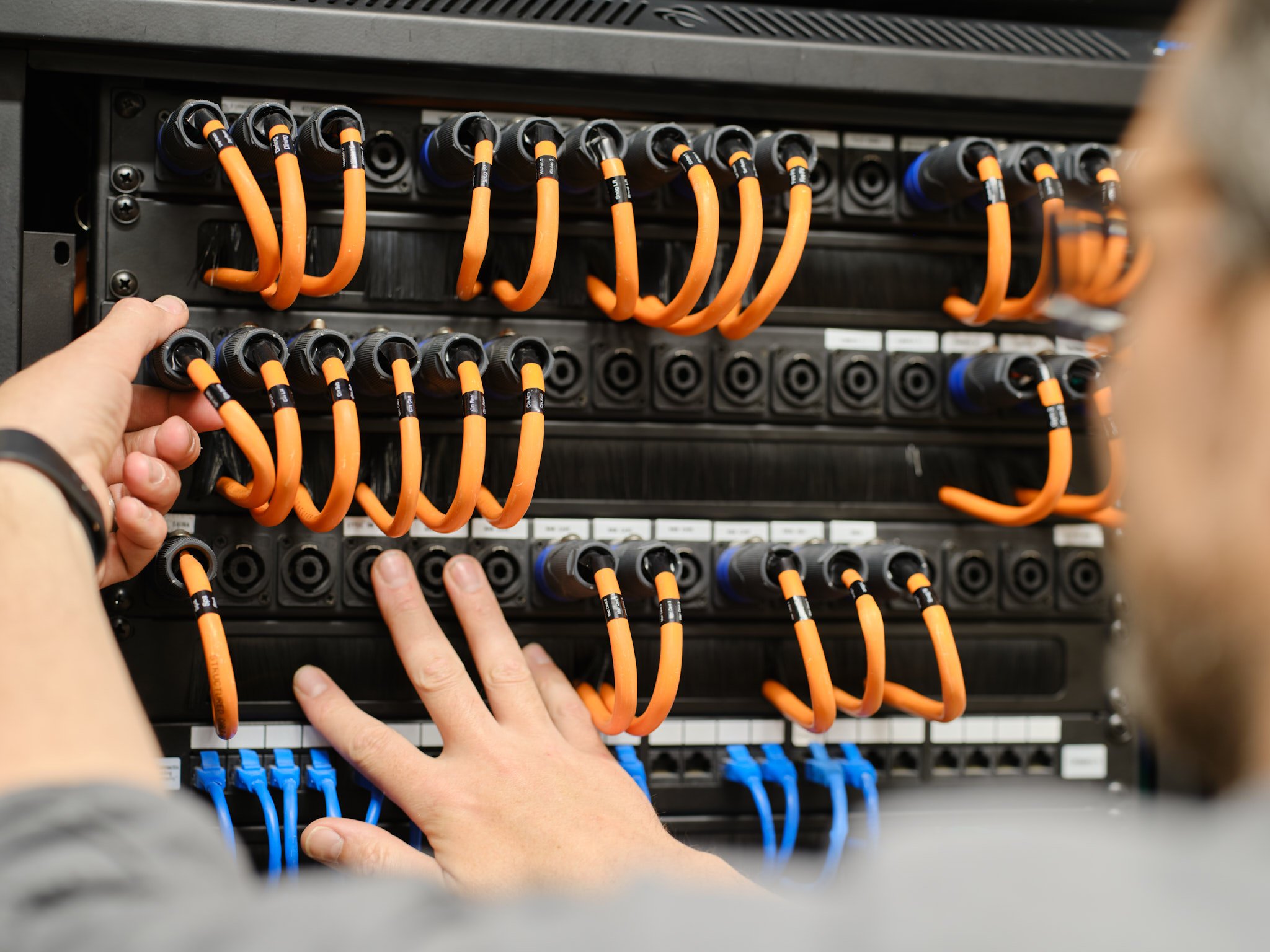
Cable infrastructure

The central nervous system of the home
Essential yet invisible, a well designed and installed cable infrastructure aims to future proof your home. We design your cabling to accommodate the technology you want now and may want in the future, giving you the flexibility to grow your system with your needs.
We take a bespoke approach to every system we design & install
Whilst a lot of the systems that can be installed are exciting and fun, the cable infrastructure that sits behind it all might not be as glamorous but is arguably the most important. When we first sit down with a client, we try to work out not only what they might want today, but also how to best accommodate requirements in the future. We then design a cable infrastructure to accommodate that fully specified system. A lot of the houses that we work in are our client’s ‘forever home’ but that doesn't mean that they need to install all of the technology on day one. A properly designed cable infrastructure gives you the freedom to slowly build up the technology in your home as and when you are ready.
Whilst there are many systems that can operate wirelessly and these capabilities are getting better every year, it will always be better to have a physical connection where possible. Some aspects of home technology may always require a physical connection for the highest quality experience. Ensuring your home has a physical infrastructure in place is one of the most important parts of any smart home. It’s a cliche, but the most expensive cable is the one you forget to put in. It’s much more cost effective to properly design and install a well considered cable infrastructure at the build stage, than it is to revisit things in 5 or 10 years time and try to get extra cables installed after everything is completed.
TESTIMONIALS
Cable infrastructure
-

BESPOKE DESIGN
Whilst there are typical cables that we would suggest at any given positions, such as category and coaxial cables at TV points, to make the most of a property, careful consideration needs to be given to exactly how many cables will be required and how they should be run.
We never want to install cables that we are sure will never be used and similarly we don't want to install higher specification cables, where a lower spec and almost certainly lower cost cable will be more than sufficient. It would be simple to just list out a generic schedule of cables per point type but this would be inefficient and in the end waste money. It is also guaranteed to miss the positions which might require additional cabling or more considered cable routing.
-

EFFICIENCY
In an ideal world, we would run the exact number of cables that would ever be needed and no more. In reality, though this is impossible. Not even considering the cables that might be needed in five years for a new gadget or system the homeowner might want, but even just during the time between the initial design, and the completion of the system, cables are inevitably repurposed when another contractor suddenly realises they need network control or a way to power a sensor. Our years of experience help us to find the right balance between covering all the cables we know will be needed as well as extras that we suspect are going to be useful. The real skill is in perfecting this balance.
-

FUTURE PROOFING
Future-Proofing is somewhat of a buzzword and not something that can be guaranteed, however it does encapsulate the ethos of what we try to do with the infrastructure wiring even if it isn’t a realistic expectation in the very long term. For example, fibre-optic cable can carry much more data than traditional copper category cables and for longer distances, so if future proofing were valued over everything else, then this could be installed throughout. This would come at a significant cost premium, as it is more expensive, harder to run, harder to commission, and requires more specialist networking infrastructure on top of just the cabling.
Considering that most data transmission in residential settings is nowhere near the capacity of our most commonly used Cat6A, it is more often than not a premium that does not deliver a sensible cost/benefit return to run everywhere. Knowing the few locations where it might actually provide useful and offer a tangible benefit is the key to ‘future-proofing’.
-

PRE WIRING
Other than lighting control, which does benefit from a commitment before the wiring begins, a lot of the other technologies and systems that we provide can be prewired for, and added later. For example, we can run the ceiling speakers’ cables in the ceilings and leave them coiled inside back boxes that are then plastered over. We take careful measurements of the exact locations and then in the future if a decision is made to add a multiroom audio system, it's as simple as cutting out the aperture and installing a ceiling speaker onto the cable that is waiting behind the cutout. Similarly, there might be many rooms where you feel at some point in the future there may be a requirement for TV but that isn't required on day one. We can run all these cables and either hide them within the rooms, walls or ceilings or terminate them into faceplates. In this case we need to do something with a large amount of cables run to the central location. This is where patch panels and wall mounted racks come into play.
-

PATCH PANELS
Once we have run all of the cables for the property back to a central location, we need to do something with them. It might be that only half of the cables are going to be used on day one but we don't want to leave the other half unfinished. In addition, we want to test all the cables early enough in the project that any issues can be rectified. To solve these problems, we use patch panels which are typically fitted into wall mounted racks. This allows us to terminate test and label every single cable that has been run in the property and when the time comes only patch through the points that we need to use. It is a similar idea to the old school telephone exchanges.
-

RACKING
The final part of the puzzle is the main equipment rack, which would be built offsite and brought to the property at the last possible minute so that potentially expensive equipment is not exposed to the dust and environment of a building site. All the equipment is installed, wired and tested offsite and then simply brought to the property and plugged in to the cabling infrastructure before the final in situ testing can take place.



